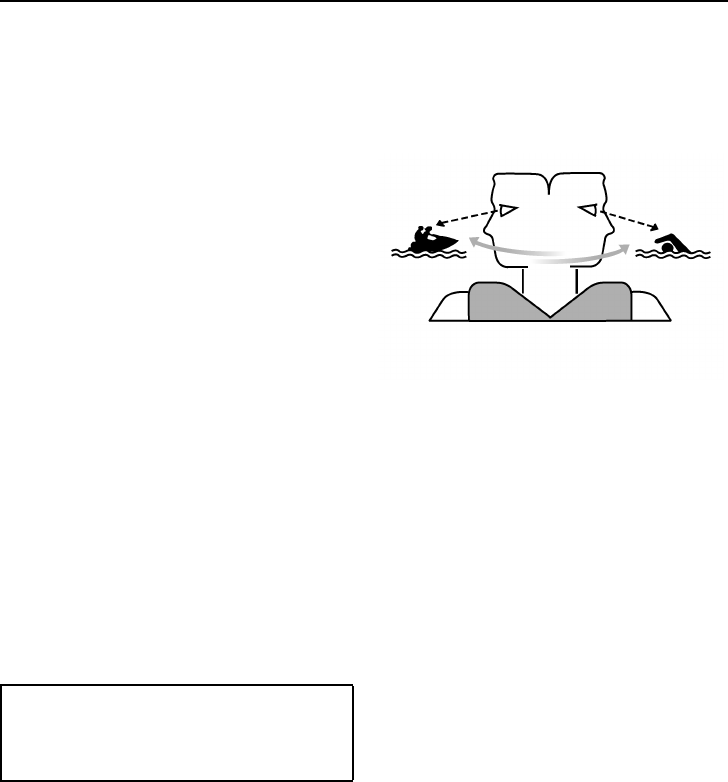
Operation
61
EJU32901
Operating your watercraft
EJU32931
Getting to know your watercraft
Operating your watercraft requires skills ac-
quired through practice over a period of time.
Take the time to learn the basic techniques
well before attempting more difficult maneu-
vers.
Operating your new watercraft can be a very
enjoyable activity, providing you with hours of
pleasure. However, it is essential to familiar-
ize yourself with the operation of the water-
craft to achieve the skill level necessary to
enjoy riding safely. Before operating this wa-
tercraft, read this owner’s/operator’s manual,
the Riding Practice Guide, the Riding Instruc-
tion card, and all labels on the watercraft. Pay
particular attention to the safety information
on page 10. Also, watch the Basic Orientation
Video provided with your watercraft. These
materials should give you an understanding of
the watercraft and its operation.
Remember: This watercraft is designed to
carry the operator and 1 passenger. Never
exceed the maximum load limit or allow more
than 2 persons to ride the watercraft at any
time.
EJU36241
Learning to operate your watercraft
Before operating the watercraft, always per-
form the pre-operation checks listed on page
48. The short time spent checking the water-
craft will reward you with added safety and re-
liability.
Check state and local laws before operating
your watercraft.
Operate defensively at safe speeds and keep
a safe distance away from people, objects,
and other watercraft. Select a wide area to
learn in, where there is good visibility and light
boat traffic.
Use the buddy system—operate with some-
one nearby. Scan constantly for people, ob-
jects, and other watercraft. Be alert for
conditions that limit your visibility or block your
vision of others.
Attach the engine shut-off cord (lanyard) to
your left wrist and keep it free from the handle-
bars so that the engine stops if you, the oper-
ator, fall off.
Wear a personal flotation device (PFD). All
riders must wear a U.S. Coast Guard ap-
proved PFD that is suitable for personal wa-
tercraft use.
Wear protective clothing. Severe internal inju-
ries can occur if water is forced into body cav-
ities as a result of falling into the water or
being near the jet thrust nozzle. Normal swim-
wear does not adequately protect against
forceful water entry into the rectum and vagi-
na. All riders must wear a wetsuit bottom or
clothing that provides equivalent protection.
Such clothing includes thick, tightly woven,
sturdy and snug-fitting apparel such as den-
im, but does not include spandex or similar
fabrics, like those used in bicycle shorts. A full
wetsuit can also protect against hypothermia
Maximum load:
160 kg (353 lb)
Load is the total weight of cargo, oper-
ator, and passenger.
UF2R10E0.book Page 61 Friday, October 31, 2008 9:14 AM


















